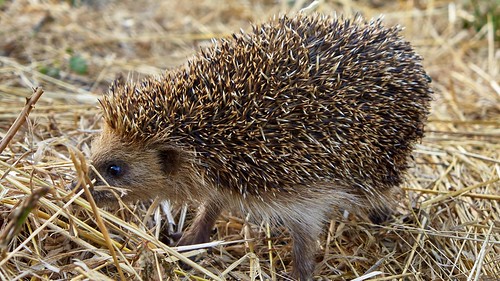Plated in duplicates on Sabouraud dextrose agar plates supplemented with 50 mg/L chloramphenicol and incubated at 37uC for 48 h. One gram of decayed wood was suspended in 10 ml of 0.85 NaCl and allowed to settle after vortexing it for 1 min. Then, 100 ml of suspension was plated in duplicates on SDA and incubated at 37uC for 48 h. For the MedChemExpress Sermorelin indoor aerial sampling of the hospital, duplicate SDA plates were exposed for 1 h in the corners and centre of the general outpatient and wards of the V. P. Chest Institute (VPCI), Delhi, on two different occasions. Plates were incubated for 48 h at 37uC.high itraconazole MICs were tested twice on different days. Azole resistance was defined for itraconazole, .2 mg/L, voriconazole, .2 mg/L, and posaconazole, .0.5 mg/L as proposed by Verweij et al. [37].Activity of Azole FungicidesThe commonly used ten azole fungicides registered under the Insecticides Act, 1968 by the Indian Central Insecticide Board and Registration Committee were tested for activity against resistant and wild type environmental and clinical A. fumigatus Indian isolates by microdilution method as described above. The azole fungicides tested were bromuconazole, cyproconazole, difenoconazole, epoxiconazole, penconazole, tebuconazole, triadimefon, metconazole (kindly gifted by Dr. P. Verweij, Nijmegen, the Netherlands) hexaconazole (Rallis India, BIBS39 web Mumbai, India) and tricyclazole (Cheminova India, Mumbai, India). The fungicides were dissolved in dimethyl sulfoxide and concentration range used was 0.06?2 mg/L.IdentificationIn order to detect overall prevalence of A. fumigatus the samples were initially inoculated on SDA plates and maximum of 3 colonies per plate were purified and identified by macro- and microscopic characteristics and growth at 50uC which differentiated A. fumigatus from A. lentulus. Samples found out to be negative for A. fumigatus were again processed without dilution and inoculated directly  on SDA plates. All of the A. fumigatus isolates were then subcultured on SDA plates supplemented with 4 mg/L itraconazole and incubated at 37uC for 48 h. Identification of all the A. fumigatus isolates that grew on 4 mg/L itraconazole containing SDA plates (ITC+ isolates) were confirmed by sequencing of the internal transcribed spacer region. In order to rule out any cryptic species within Aspergillus section Fumigati, molecular identification was performed by amplification of parts of the b-tubulin gene and calmodulin gene [34,35].Statistical AnalysisPoint serial correlation was computed between MICs of wild type and TR34/L98H A. fumigatus isolates of clinical and environmental origin to determine the correlation 24786787 coefficient which is a measure of the effect size (r), where values of r = 0 indicate no correlation between MICs, r = 1 indicate positive correlation and r = 21 indicate negative correlation. In cases where correlation MICs have similar values for all isolates, correlation effect size was considered r = 0 [21].Antifungal Susceptibility TestingThe in vitro activity of all the standard azole antifungals was investigated using CLSI M38-A2 broth microdilution [36]. A total of 53 itraconazole resistant A. fumigatus isolates (44 ITC+ environmental and 9 ITC+ clinical) were subjected to AFST. Nine itraconazole resistant clinical isolates were cultured from patients suspected of bronchopulmonary aspergillosis. Among the 9 ITC+ A. fumigatus clinical isolates two have been reported earlier [22]. In addition, 35 itraconazole suscep.Plated in duplicates on Sabouraud dextrose agar plates supplemented with 50 mg/L chloramphenicol and incubated at 37uC for 48 h. One gram of decayed wood was suspended in 10 ml of 0.85 NaCl and allowed to settle after vortexing it for 1 min. Then, 100 ml of suspension was plated in duplicates on SDA and incubated at 37uC for 48 h. For the indoor aerial sampling of the hospital, duplicate SDA plates were exposed for 1 h in the corners and centre of the general outpatient and wards of the V. P. Chest Institute (VPCI), Delhi, on two different occasions. Plates were incubated for 48 h at 37uC.high itraconazole MICs were tested twice on different days. Azole resistance was defined for itraconazole, .2 mg/L, voriconazole, .2 mg/L, and posaconazole, .0.5 mg/L as proposed by Verweij et al. [37].Activity of Azole FungicidesThe commonly used ten azole fungicides registered under the Insecticides Act, 1968 by the Indian Central Insecticide Board and Registration Committee were tested for activity against resistant and wild type environmental and clinical A. fumigatus Indian isolates by microdilution method as described above. The azole fungicides tested were bromuconazole, cyproconazole, difenoconazole, epoxiconazole, penconazole, tebuconazole, triadimefon, metconazole (kindly gifted by Dr. P. Verweij, Nijmegen, the Netherlands) hexaconazole (Rallis India, Mumbai, India) and tricyclazole (Cheminova India, Mumbai, India). The fungicides were dissolved in dimethyl sulfoxide and concentration range used was 0.06?2 mg/L.IdentificationIn order to detect overall prevalence of A. fumigatus the samples were initially inoculated on SDA plates and maximum of 3 colonies per plate were purified and identified by macro- and microscopic characteristics and growth at 50uC which differentiated A. fumigatus from A. lentulus. Samples found out to be negative for A. fumigatus were again processed without dilution and inoculated directly on SDA plates. All of
on SDA plates. All of the A. fumigatus isolates were then subcultured on SDA plates supplemented with 4 mg/L itraconazole and incubated at 37uC for 48 h. Identification of all the A. fumigatus isolates that grew on 4 mg/L itraconazole containing SDA plates (ITC+ isolates) were confirmed by sequencing of the internal transcribed spacer region. In order to rule out any cryptic species within Aspergillus section Fumigati, molecular identification was performed by amplification of parts of the b-tubulin gene and calmodulin gene [34,35].Statistical AnalysisPoint serial correlation was computed between MICs of wild type and TR34/L98H A. fumigatus isolates of clinical and environmental origin to determine the correlation 24786787 coefficient which is a measure of the effect size (r), where values of r = 0 indicate no correlation between MICs, r = 1 indicate positive correlation and r = 21 indicate negative correlation. In cases where correlation MICs have similar values for all isolates, correlation effect size was considered r = 0 [21].Antifungal Susceptibility TestingThe in vitro activity of all the standard azole antifungals was investigated using CLSI M38-A2 broth microdilution [36]. A total of 53 itraconazole resistant A. fumigatus isolates (44 ITC+ environmental and 9 ITC+ clinical) were subjected to AFST. Nine itraconazole resistant clinical isolates were cultured from patients suspected of bronchopulmonary aspergillosis. Among the 9 ITC+ A. fumigatus clinical isolates two have been reported earlier [22]. In addition, 35 itraconazole suscep.Plated in duplicates on Sabouraud dextrose agar plates supplemented with 50 mg/L chloramphenicol and incubated at 37uC for 48 h. One gram of decayed wood was suspended in 10 ml of 0.85 NaCl and allowed to settle after vortexing it for 1 min. Then, 100 ml of suspension was plated in duplicates on SDA and incubated at 37uC for 48 h. For the indoor aerial sampling of the hospital, duplicate SDA plates were exposed for 1 h in the corners and centre of the general outpatient and wards of the V. P. Chest Institute (VPCI), Delhi, on two different occasions. Plates were incubated for 48 h at 37uC.high itraconazole MICs were tested twice on different days. Azole resistance was defined for itraconazole, .2 mg/L, voriconazole, .2 mg/L, and posaconazole, .0.5 mg/L as proposed by Verweij et al. [37].Activity of Azole FungicidesThe commonly used ten azole fungicides registered under the Insecticides Act, 1968 by the Indian Central Insecticide Board and Registration Committee were tested for activity against resistant and wild type environmental and clinical A. fumigatus Indian isolates by microdilution method as described above. The azole fungicides tested were bromuconazole, cyproconazole, difenoconazole, epoxiconazole, penconazole, tebuconazole, triadimefon, metconazole (kindly gifted by Dr. P. Verweij, Nijmegen, the Netherlands) hexaconazole (Rallis India, Mumbai, India) and tricyclazole (Cheminova India, Mumbai, India). The fungicides were dissolved in dimethyl sulfoxide and concentration range used was 0.06?2 mg/L.IdentificationIn order to detect overall prevalence of A. fumigatus the samples were initially inoculated on SDA plates and maximum of 3 colonies per plate were purified and identified by macro- and microscopic characteristics and growth at 50uC which differentiated A. fumigatus from A. lentulus. Samples found out to be negative for A. fumigatus were again processed without dilution and inoculated directly on SDA plates. All of  the A. fumigatus isolates were then subcultured on SDA plates supplemented with 4 mg/L itraconazole and incubated at 37uC for 48 h. Identification of all the A. fumigatus isolates that grew on 4 mg/L itraconazole containing SDA plates (ITC+ isolates) were confirmed by sequencing of the internal transcribed spacer region. In order to rule out any cryptic species within Aspergillus section Fumigati, molecular identification was performed by amplification of parts of the b-tubulin gene and calmodulin gene [34,35].Statistical AnalysisPoint serial correlation was computed between MICs of wild type and TR34/L98H A. fumigatus isolates of clinical and environmental origin to determine the correlation 24786787 coefficient which is a measure of the effect size (r), where values of r = 0 indicate no correlation between MICs, r = 1 indicate positive correlation and r = 21 indicate negative correlation. In cases where correlation MICs have similar values for all isolates, correlation effect size was considered r = 0 [21].Antifungal Susceptibility TestingThe in vitro activity of all the standard azole antifungals was investigated using CLSI M38-A2 broth microdilution [36]. A total of 53 itraconazole resistant A. fumigatus isolates (44 ITC+ environmental and 9 ITC+ clinical) were subjected to AFST. Nine itraconazole resistant clinical isolates were cultured from patients suspected of bronchopulmonary aspergillosis. Among the 9 ITC+ A. fumigatus clinical isolates two have been reported earlier [22]. In addition, 35 itraconazole suscep.
the A. fumigatus isolates were then subcultured on SDA plates supplemented with 4 mg/L itraconazole and incubated at 37uC for 48 h. Identification of all the A. fumigatus isolates that grew on 4 mg/L itraconazole containing SDA plates (ITC+ isolates) were confirmed by sequencing of the internal transcribed spacer region. In order to rule out any cryptic species within Aspergillus section Fumigati, molecular identification was performed by amplification of parts of the b-tubulin gene and calmodulin gene [34,35].Statistical AnalysisPoint serial correlation was computed between MICs of wild type and TR34/L98H A. fumigatus isolates of clinical and environmental origin to determine the correlation 24786787 coefficient which is a measure of the effect size (r), where values of r = 0 indicate no correlation between MICs, r = 1 indicate positive correlation and r = 21 indicate negative correlation. In cases where correlation MICs have similar values for all isolates, correlation effect size was considered r = 0 [21].Antifungal Susceptibility TestingThe in vitro activity of all the standard azole antifungals was investigated using CLSI M38-A2 broth microdilution [36]. A total of 53 itraconazole resistant A. fumigatus isolates (44 ITC+ environmental and 9 ITC+ clinical) were subjected to AFST. Nine itraconazole resistant clinical isolates were cultured from patients suspected of bronchopulmonary aspergillosis. Among the 9 ITC+ A. fumigatus clinical isolates two have been reported earlier [22]. In addition, 35 itraconazole suscep.
http://cathepsin-s.com
Cathepsins
